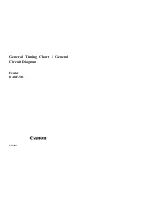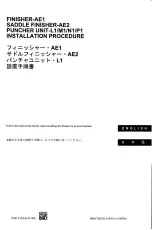
6–8 Selecting Paper and Media
The leading edge of an envelope that feeds into the
printer must be straight. The fold must be firmly
creased and be no thicker than two paper thick-
nesses. As a rule, the larger the envelope is, the
more difficult it is to feed properly.
The base weight of envelope paper must be 20
pounds (75 g/m
2
). Commercial envelopes, called
regular or business envelopes, are the most widely
used and are probably the most reliable for your
printing needs.
Neither envelopes with peel-off adhesive strips nor
envelopes that are heavily embossed feed well.
Avoid heavily textured or coated envelopes. In
addition, avoid
envelopes with snaps, clasps, tie strings, cello-
phane windows, or curved or thick leading paper
edges. (They don’t feed consistently.)
envelopes composed with glues, inks, and
adhesives that could discolor, scorch, or melt
when heat is applied.
adhesives that generate harmful emissions at
temperatures greater than 200˚C (392˚F) for 0.1
seconds.
envelopes made with recycled paper.
envelopes that use an adhesive that relies on
pressure for sealing.
envelopes that have already been through the
printer once. (Don’t feed envelopes into the
printer a second time.)
envelope seams that do not have a continuous
and even glue line (excluding the envelope flap).
Summary of Contents for SuperScript 610plus
Page 1: ...Silentwriter SuperScript 610plus User s Guide ...
Page 8: ...vi Contents ...
Page 10: ...viii ...
Page 11: ...Introduction 1 1 1 1 Introduction ...
Page 20: ...1 10 Introduction ...
Page 21: ...Setting Up 2 1 2 2 Setting Up ...
Page 26: ...2 6 Setting Up ...
Page 60: ...2 40 Setting Up ...
Page 64: ...2 44 Setting Up ...
Page 65: ...Printing with Your SuperScript 610plus 3 1 3 3 Printing with Your SuperScript 610plus ...
Page 95: ...NEC SuperScript Print Manager 4 1 4 4 NEC SuperScript Print Manager ...
Page 104: ...4 10 NEC SuperScript Print Manager ...
Page 105: ...Print Status Window 5 1 5 5 Print Status Window ...
Page 117: ...Selecting Paper and Media 6 1 6 6 Selecting Paper and Media ...
Page 133: ...Using Fonts 7 1 7 7 Using Fonts ...
Page 137: ...Using Fonts 7 5 20 Additional TrueType Fonts ...
Page 138: ...7 6 Using Fonts ...
Page 139: ...Choosing Print Options 8 1 8 8 Choosing Print Options ...
Page 155: ...Maintaining Your Printer 9 1 9 9 Maintaining Your Printer ...
Page 181: ...Troubleshooting 10 1 1 10 0 Troubleshooting ...
Page 190: ...10 10 Troubleshooting ...
Page 220: ...10 40 Troubleshooting ...
Page 221: ...Getting Service and Support 11 1 1 11 1 Getting Service and Support For U S only ...
Page 230: ...11 10 Getting Service and Support ...
Page 250: ...A 20 Character Sets and Code Sequence Commands for HP LaserJet IIP ...
Page 251: ...Optimizing Printer Performance B 1 B B Optimizing Printer Per formance ...
Page 255: ...Specifications C 1 C C Specifications ...
Page 259: ...Interface Cable Specifications D 1 D D Interface Cable Specifications ...
Page 264: ...D 6 Interface Cable Specifications ...
Page 267: ...Installing the Memory Expansion Module F 1 F F Installing the Memory Expansion Module ...
Page 282: ...Glossary 10 ...
















































